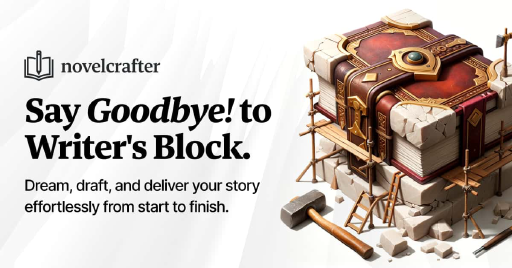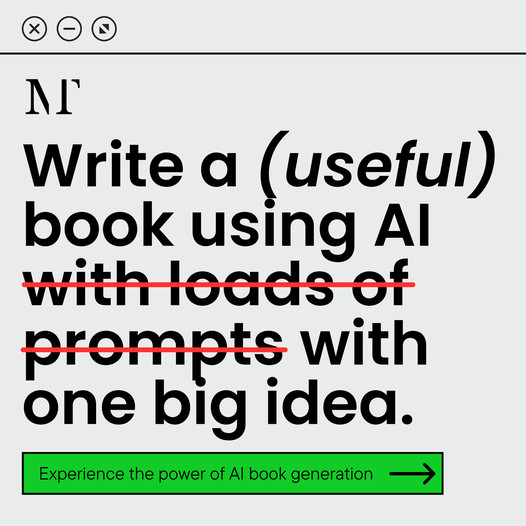Preparing for Editing Your Book
Wow, you’ve made it! Finishing that first draft is no small feat, so give yourself a little victory dance. The next hill to climb is editing, which can sound daunting but is crucial for a gem of a book.
Importance of Taking a Break
Once you type “The End,” it’s break time, my friend. Resist the urge to jump right back in—your brain deserves some R&R. Taking about two months away from your manuscript is perfect for coming back with fresh eyes. It’s like seeing your work through someone else’s glasses! This time away from your story lets you catch things you’d otherwise miss if you zoomed straight into editing. The Write Practice makes a solid case for this hiatus as a clarity booster.
Initial Editing Focus
When you’re ready to roll up those sleeves, aim your energy at the big fish first: the storyline, characters, and bizarre plot journeys. Ignore finicky details for now and tackle what’ll make or break your narrative. Think of this step as prepping the soil before planting—get the lay of the land sorted, so anything that follows can grow smooth and strong. The Write Practice agrees, nailing down these essentials up front makes the nit-picky stuff far easier later on.
Here’s a little cheat sheet table to guide your editing eye:
| Editing Focus Area | What You’re Looking At | Examples |
|---|---|---|
| Structure Issues | Check if the story goes with the flow | Chapter order, pacing trends |
| Characterization | Make sure your folks are real folk | Motivation, character arcs |
| Plot Holes | Hunt for those WTF moments in your plot | Inconsistencies, vanished threads |
By zeroing in on these biggies first, you’ll be in great shape to tackle the finer details afterward. Wanna get deeper into the weeds? Peek at our handy resources on steps to self-edit your writing and how to revise your manuscript.
Editing Stages: A Journey of Refinement
Turning your book into a masterpiece is a mix of creativity and structured perseverance. The editing process is a four-part harmony—structural story editing, line editing, copyediting, and finally proofreading. Each step plays a unique role in peeling away imperfections to reveal your narrative’s core.
Structural Story Editing
Considered the granddaddy of edits, structural story editing zooms out to look at the full expanse of your tale. Picture it as a film director deciding on key scenes to drive the story forward. We’re talkin’ 38 essential parts that should all work in sync, making sure every character arc, every twist leads the reader along a compelling path. Things like character development, pacing, and emotional beats get the star treatment here.
Some stuff under this magnifying glass include:
| Element | What We’re Checkin’ |
|---|---|
| Character Arc | Are they evolving, stumbling, or just standing still? |
| Pacing | Is it a slow waltz or a fast chase? |
| Conflict | The meat and potatoes of the plot—what’s the central showdown? |
| Theme | What’s the big idea swimming beneath the surface? |
| Setting | Where and when are your characters makin’ their moves? |
Line Editing
Line editing gets into the nitty-gritty, the nit-picky details that shape your story’s overall vibe. This is about more than just words—it’s about the mood, the voice. Think of it like fine-tuning an orchestra. A good line editor helps the prose sing by scrubbing out clunky sentences and smoothing the overall feel.
Here’s where they zero in:
 What Poetry Feels Like
What Poetry Feels Like| Aspect | What’s Getting Polished |
|---|---|
| Tone | Is the vibe throughout the book steady and consistent? |
| Style | Does your narrative voice hit the right notes across chapters? |
| Clarity | Is everything easy to understand or does it need a little spitshine? |
Copyediting
Time for the grammar robots to work their magic. Copyediting is scrubbing away those pesky grammar gremlins and spelling slayers. A copyeditor makes sure language conventions are not just suggestions but rules to live by. Correcting these helps make sure nobody trips over silly mistakes when your book hits the shelves.
Focus points while copyediting:
| Error Type | What’s Being Fixed |
|---|---|
| Grammar | Correct verb tenses, subject agreements, you name it! |
| Spelling | No misspelled dragons or spell-casting disasters here. |
| Punctuation | Tattoos commas and dots where they belong—or not! |
Proofreading
And finally, proofreading is the last sprint to the finish. It’s all about catching the little things that might have snuck through earlier. Think of a musician giving their guitar one last tune before the big show. Reading aloud can sometimes be a good trick to hear the tiniest of missteps.
As you sprint through these rounds of editing, keep things orderly and your effort methodical. This way, your book stands ready to dazzle. Remember, your journey doesn’t stop here! Check out our beginner writing tips or see more on how to revise your manuscript.
Self-Editing Techniques
Editing your book is that magic touch to make your story shine, pulling readers in and keeping ‘em hooked from start to the finale. It’s all about cleaning up the mess and getting everything smooth. Here’s how you can tweak your manuscript like a pro.
Addressing Tense Shifts
Tense swaps are sneaky critters that trip up even seasoned writers. Give your verbs a once-over to catch any time jumps that might send readers on an unexpected ride. Got your narrative stuck in the past tense? Keep it there, don’t time travel without a plan. Consistency is king here, folks, helping your audience feel right at home within your yarn. For those needing extra help, take a peek at Alyssa Matesic’s article.
Maintaining Point of View
Stickin’ to one point of view (POV) is like keeping your story steady on a single track. Jumping between characters without warning can leave folks feeling dizzy. If your main character is in the driver’s seat, don’t let someone else grab the wheel without a good reason. Keep your POV seamless and your story will pack a punch.
Avoiding Repetitive Phrases
Repetitive phrases can make your words feel like they’ve hit the snooze button. Give your sentences some swagger by switching up those tired expressions. Jot down phrases you tend to overuse and swap them out for fresh ones. A thesaurus might just become your best pal, but remember, pick words that fit like a glove within the context.
| Common Blahs | Fresh Spin |
|---|---|
| “In my opinion” | “I reckon” |
| “Very happy” | “Over the moon” |
| “Really interesting” | “Mind-blowing” |
Polishing Punctuation
Misusing punctuation is like having rocks in your shoes, just plain annoying. Piling on exclamation points, semicolons, and commas is a surefire way to shatter the flow. Keep an eye on those marks; less is more for keeping your story readable. Consider making a cheat sheet or tracker to keep your punctuation in check and your prose singing (Alyssa Matesic).
These self-editing tricks can give your manuscript the polish it needs. Check out our steps to self-edit your writing for more handy tips or dive into writing advice for new authors to beef up your writing chops.
Utilizing Manuscript Editing Software
Getting tech-savvy can turbocharge your editing game. There are heaps of manuscript editing tools out there, each packed with features for writers wanting to polish their work to perfection. Here’s a look at some top-notch tools that’ll have you writing like a pro.
AutoCrit Features
AutoCrit is a special treat for fiction writers. It’s like having a personal assistant who checks your work against the stuff professionals churn out. Here’s what you get:
- Genre Analysis: See how your story stacks up against similar tales out there.
- Pacing and Emotion: Nail the flow and tug at the heartstrings for reader engagement.
- Dialogue Checks: Perfect those conversations with checks for clarity and authenticity.
These tools are like having a trusty advisor pointing out where to nudge things in your narrative.
Grammarly Functionality
Grammarly is a household name among writers, and for a good reason. It’s there to catch those pesky grammar gremlins and polish your style:
- Grammar and Spelling Checks: Wave goodbye to typos and grammatical blunders.
- Style Suggestions: Spruce up your writing with tweaks that’ll make you shine.
- Plagiarism Checker: Keep it original by scanning your work against a zillion sources.
Grammarly is your sidekick for delivering crisp, mistake-free pages—it’s hard to put a price on that kind of peace of mind.
Fictionary for Structural Editing
Fictionary helps you look at the bigger picture of your story. It’s like having a map for your book’s journey:
- Story Structure Analysis: Check if your plot hits high marks on proven frameworks.
- Plot Development Tools: Keep tabs on your plot and character arcs without losing any threads.
- Scene Evaluation: Pinpoint scenes that pack a punch or need a tweak.
Fictionary does a bang-up job of helping you craft a smooth, engaging narrative.
SmartEdit for Creative Writers
SmartEdit is your go-to for common hiccups in storytelling:
- Word and Phrase Analysis: Zoom in on those words and phrases you might be overusing.
- Out-of-Context Quotes: Spot phrases that stick out like a sore thumb.
- Repetitive Use Detection: Smooth out those echoing words for a cleaner read.
SmartEdit is like having a fine-tooth comb for clarity and a continuity refresher.
Using manuscript editing software is like having a toolkit for tackling different aspects of your writing. They handle the techy stuff, so you can focus on spinning a good yarn. For more editing wisdom, check out our guide on tips for editing your book.
Working with Beta Readers
When it comes to polishing your masterpiece, beta readers are like gold. They offer fresh eyes and perspectives that can truly make your story shine. The trick, though, is picking the right folks and knowing how to handle their insights.
Selecting Beta Readers
Plucking the perfect beta readers isn’t rocket science, but it does need some thought. You’re looking for a mix of folks who can give you spot-on feedback, and here’s the lowdown on who fits the bill:
- Target Reader: These folks should be the kind of readers who’d naturally pick up your book.
- Genre Savvy: It helps if they’re familiar with the twists and turns typical of your book’s category.
- Truth Talkers: Find those who aren’t afraid to tell it like it is; sugarcoated feedback won’t help anybody.
- Dependability: You want people who’ll actually follow through on reading and responding in a timely manner.
- Subject Matter Whizz: If your book touches on specific topics, a reader with expertise in that area can be a bonus.
You might discover these gems right under your nose—from your friend circle, among online writing communities, or by using services like Scribophile, Critique Circle, and StoryOrigin. A quick scan of their pros and cons also makes a world of difference (Author Learning Center) (Jami Gold).
Handling Beta Reader Feedback
Once you’ve got your beta readers on board, it’s time to play your part in making the most of their feedback. Here’s how you can roll with it:
- Set Ground Rules: Hand them a clear road map of deadlines and how they can get their hands on your manuscript.
- Stay Chill: Listen with an open heart; even the tough stuff can be nuggets of wisdom.
- Seek Real Talk: Encourage them to dig deep and be straightforward, as this is where true growth lies.
Remind them that their time’s appreciated with a big thank-you. A nice gesture could be offering to read their work in return when the opportunity arises (Author Learning Center).
Expressing Gratitude
A little gratitude goes a long way, ya know? Whether the feedback was harsh or hunky-dory, showing thanks can make a huge difference. Here are some ways to do that:
- Simple Thanks: A warm note can do wonders.
- Shout-Out: Give them a nod in your book where it fits.
- Be There For Them: Lend a hand with their writing projects when you can.
Acknowledging their help isn’t just polite—it’s an investment in your ongoing relationship with people who stood by you and your work (Jami Gold). Keeping those good vibes flowing might even bring them back to help with your next book.
Expert Editing Tips
Why Motivation Matters
Your story’s heartbeat is your characters’ motivation. Every chapter or scene needs to be fueled by what your characters want and why. Are there obstacles in their path? As they grow and make decisions, their reasons for acting will shift. Editing lets you check this. If a character’s behavior seems wacky, maybe their motivation needs a boost. If a chapter feels like a snail’s race, toss in some new hurdles to keep it exciting. Zeroing in on these aspects ups your storytelling game (Emma Lombard).
The Magic of Reading Aloud
Reading your text aloud is a solid way to snag errors you might miss just scanning with your eyes. It’s great for spotting phrases you keep repeating, clumsy sentences, and dialogue that sounds robotic. Hearing your story lets you pick up on pacing and make dialogue feel real. Not into reading aloud yourself? No worries, fire up a text-to-speech program or try Word’s read-aloud feature (Emma Lombard).
Why You Should Skip Editing While Writing
When writing your first draft, just let the words spill out. Editing as you go can cramp your style and block creativity. The first go-round is a playground for your ideas, so don’t stress about perfection here. You’re not gonna get every detail spot-on in one shot, so the key’s just getting it all down. Tweak and polish later on in the process. Let loose now, and refine it later (Emma Lombard).
Step Away Before You Edit
Before diving into edits, step back from your work for a while. Give it a couple of weeks to simmer down. Doing different things will let you return with fresh perspective. This breather period helps you catch errors and weird bits you might miss when you’re in the thick of it. After a break, you’ll have a sharper eye for spots that need a fix, boosting the clarity and flow of your writing (Emma Lombard).
If you’re on the hunt for more tips, check out beginner writing tips or explore how to improve writing skills to step up your writing craft as you polish that manuscript.

 Grab my poetry book, 'we're all just wanderers in the end' Here
Grab my poetry book, 'we're all just wanderers in the end' Here AD: Your Book Finally Written...
AD: Your Book Finally Written...